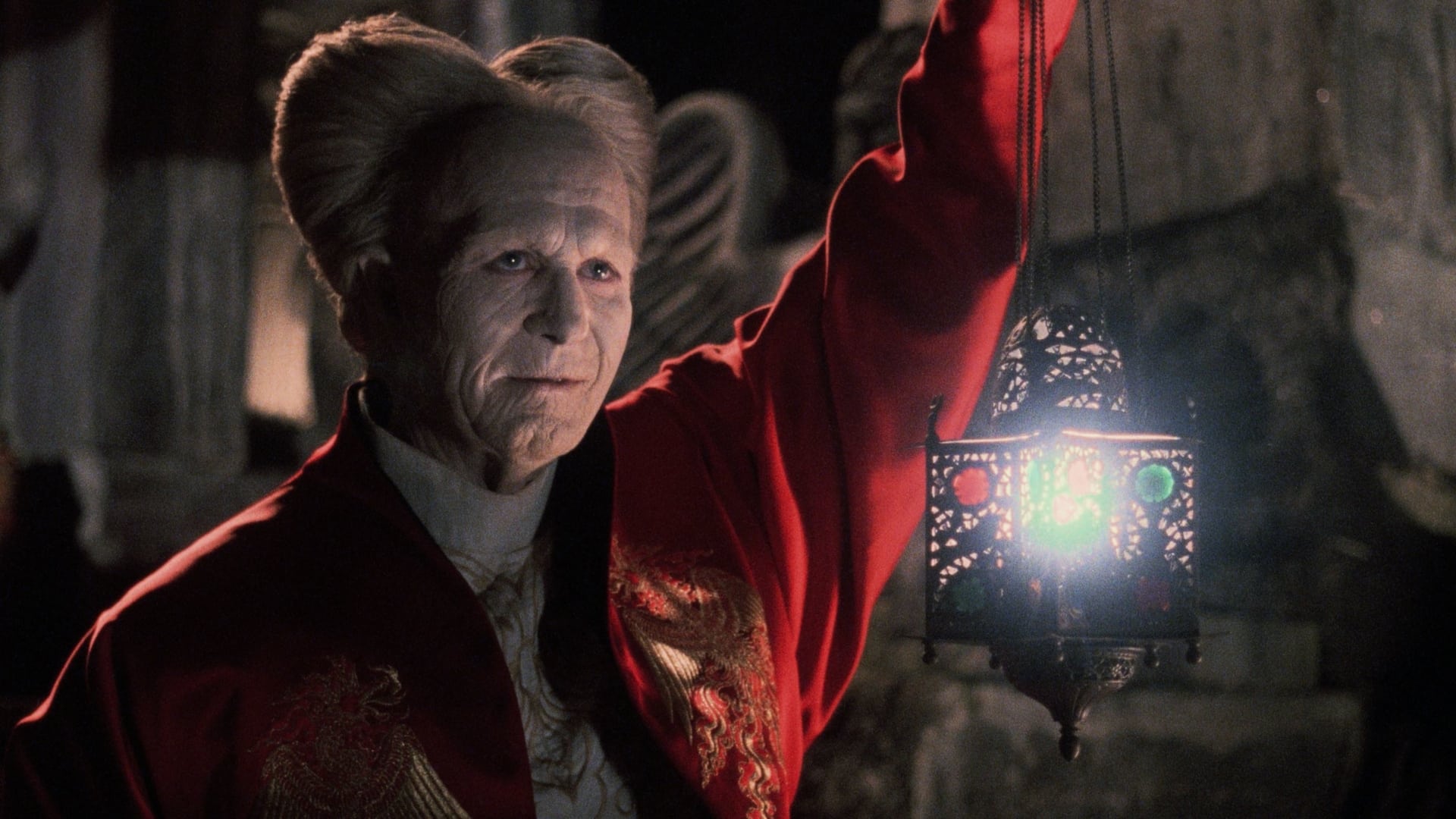Unveiling The Mystery: Your Complete Guide To The Dracula Simia Orchid
Orchids have long captured the hearts of plant enthusiasts with their exquisite beauty and unique varieties, and among these, the monkey face orchid, scientifically known as Dracula simia, stands out for its intriguing resemblance to a monkey’s face. This rare and captivating species offers a unique challenge and immense reward for growers seeking something truly extraordinary for their collection. Far from being just another houseplant, the Dracula simia is a living piece of art, a botanical marvel that consistently sparks wonder and conversation. Its peculiar charm makes it a coveted specimen, inviting both seasoned orchidologists and curious beginners to delve into its fascinating world.
If you've ever dreamt of cultivating a plant that defies conventional beauty, one that possesses an almost mythical allure, then the Dracula simia orchid is undoubtedly for you. This comprehensive guide will walk you through everything you need to know, from its mysterious origins and unique characteristics to the precise care requirements that will ensure its thriving presence in your home or garden. Prepare to discover how to grow and care for the Dracula simia orchid, also known as the monkey orchid, and unlock the secrets to its successful cultivation.
Table of Contents
- Unveiling the Enigma: What is the Dracula Simia Orchid?
- A Glimpse into History: Discovery and Naming
- The Allure of the Monkey Orchid: Unique Characteristics
- Fun Facts About the Monkey-Faced Orchid
- The Art of Cultivating Dracula Simia: A Comprehensive Guide
- Challenges and Conservation: Protecting Dracula Simia
- Starting Your Journey: Growing from Seeds
- Final Thoughts on Your Monkey Orchid Journey
Unveiling the Enigma: What is the Dracula Simia Orchid?
The Dracula simia is a rare species of orchid that belongs to the Dracula genus—a group of about 110 known orchid species characterized by their unusual and often eerie appearance. These orchids are truly unlike any other, immediately captivating anyone who lays eyes on them. The genus name Dracula doesn’t refer to the famous vampire for nothing; it evokes a sense of mystery and, in some cases, a slightly unsettling beauty. The Dracula part of the name of this orchid stems from two long spikes from the sepals that look like fangs of Dracula as described in movies and fiction, giving the flowers a dramatic and somewhat intimidating presence.
Beyond the "fangs," the true marvel of the Dracula simia lies in its specific epithet, "simia," which is Latin for "monkey." This is where the orchid earns its popular moniker: the monkey face orchid. The intricate arrangement of its petals and sepals creates an uncanny resemblance to a monkey's face, complete with eyes, a nose, and a furry muzzle. This extraordinary mimicry is a testament to nature's boundless creativity and the incredible diversity found within the orchid family. While the visual resemblance is striking, it’s important to note that the scientific name orchis simia (a different orchid species) derives from the fact that this orchid plant grows from two oval shaped tubers that look like the testicles. This is a common point of confusion, as the monkey face of Dracula simia is purely floral, whereas the "simia" in Orchis simia refers to its root structure. For our Dracula simia, it is truly the flower itself that embodies the monkey's visage, making it a unique botanical curiosity.
A Glimpse into History: Discovery and Naming
The fascinating journey of the Dracula genus into botanical recognition began in the late 19th century. This unusual genus of orchids was first discovered in 1870 by an amateur orchid collector. However, it wasn't until much later, in 1978, that the genus was formally established and named by Carlyle Luer, a renowned American botanist specializing in orchids. Luer’s meticulous work helped to classify and bring these enigmatic plants to the forefront of the botanical world.
The name he chose, Dracula, is the Latin word for dragon, although it calls to mind an infamous literary character of the same name. This dual meaning perfectly encapsulates the essence of these orchids: their often dark, brooding colors and unique shapes can evoke images of mythical beasts, while their eerie beauty can be as captivating as any fictional vampire. The specific classification of our subject is Dracula simia (Luer) Luer 1978, falling under the subgenus Dracula, section Dracula, and subsection Dracula, series Dracula. This detailed classification highlights the complex and organized structure within the orchid family, a testament to years of dedicated botanical research. A stunning example, often seen in photographs, is the work of photographers like Eric Hunt, whose captivating image of Dracula simia by © Eric Hunt perfectly captures its unique charm.
The Allure of the Monkey Orchid: Unique Characteristics
The Dracula simia, or monkey face orchid, is unique and fascinating, setting it apart from more conventional orchid varieties. Its primary appeal, as mentioned, lies in its astonishing resemblance to a monkey's face, a feature that makes it an instant conversation starter and a prized possession for any plant collector. Among the vast array of orchid species, this intriguing mimicry truly stands out.
Beyond its captivating appearance, the Dracula simia possesses several characteristics that make it particularly appealing to growers. These tiny orchids have compact growth habits and very small flowers and leaves, making them incredibly space-efficient. They are perfect for growers who have limited space or who want to create intricate, detailed orchid displays. Unlike some larger, more sprawling orchid species, the Dracula simia can thrive in smaller terrariums, vivariums, or dedicated orchid cabinets, allowing enthusiasts to cultivate a diverse collection even in urban environments. In their natural habitat, monkey orchids are epiphytic or occasionally terrestrial. This means they typically grow on other plants (like trees) without harming them, or sometimes directly in the ground, usually in very specific soil conditions. This adaptability, even within its niche, further adds to its unique appeal. Its beauty goes beyond ordinary gardens, offering a growth habit that is both manageable and visually stunning, making it a true jewel in the orchid world.
Fun Facts About the Monkey-Faced Orchid
The Dracula simia is not just a pretty face; it comes with a host of interesting quirks and facts that deepen its allure. Here are some intriguing facts about this captivating orchid:
- Year-Round Bloomers: One of the most delightful aspects of monkey faced Dracula orchids is their ability to produce flowers throughout the year. They are not tied down to any specific blooming season, meaning you can enjoy their whimsical "faces" at almost any time, provided their care needs are met.
- Scent of Citrus: While their appearance is striking, their fragrance is equally surprising. The flowers of monkey faced orchids smell like ripe oranges, adding another layer of sensory delight to their cultivation. This sweet, fruity aroma is a pleasant contrast to their somewhat eerie visual appeal.
- Longevity: With proper care, most Dracula orchids can live up to 20 years, making them a long-term commitment and a rewarding addition to your plant family. Their enduring presence allows growers to form a deep connection with these unique botanical specimens.
- Modest Stature: Despite their dramatic appearance, these orchids grow to be about 2 feet tall. Their compact size makes them manageable for indoor cultivation, even for those with limited vertical space.
- Rarity in the Wild: The monkey face orchid plant, scientifically known as Dracula simia, is one of the rarest orchid species in the world, captivating gardeners with its unique characteristics. Its scarcity in natural habitats makes successful cultivation even more significant for conservation efforts.
- A Name Game: As mentioned earlier, while Dracula simia is known for its monkey-like flowers, the scientific name Orchis simia (another type of orchid entirely) derives its "simia" from its root structure, which resembles testicles. This is a fascinating distinction and a common point of confusion among plant enthusiasts, highlighting the diverse ways plants earn their names.
The Art of Cultivating Dracula Simia: A Comprehensive Guide
For orchid enthusiasts seeking a unique and rewarding challenge, growing monkey face orchids (Dracula simia) can be a fascinating journey. Discover how to grow and care for the Dracula simia orchid, also known as the monkey orchid, and unlock its full potential. This complete guide will provide easy tips for planting, watering, lighting, and flowering success. You'll learn how to grow Dracula simia, a monkey orchid that resembles a monkey face, in your home or garden, ensuring it thrives and graces you with its extraordinary blooms. We’ll delve into its light, temperature, humidity, watering, fertilizing, soil, and pruning needs, offering a holistic approach to its care.
Lighting the Way: Ideal Light Conditions
Light is a critical factor for the health and flowering of your Dracula simia orchid. These orchids prefer bright, indirect light, mimicking their natural habitat in the cloud forests where light is filtered by dense canopy and mist. Direct sunlight, especially harsh afternoon sun, can scorch their delicate leaves and flowers, leading to irreversible damage. Think of the light conditions in a shaded greenhouse or near an east-facing window where they receive gentle morning sun. A north-facing window might also work, but ensure it's sufficiently bright. If natural light is insufficient, supplemental artificial lighting, such as LED grow lights, can be used. Position them to provide diffused light, avoiding intense, focused beams. Signs of too much light include yellowing or reddish leaves, while insufficient light might result in dark green, floppy leaves and a lack of blooms. Achieving the right balance is key to their vibrant growth and consistent flowering.
The Perfect Climate: Temperature and Humidity
The native environment of Dracula simia is cool, misty cloud forests, which means they thrive in specific temperature and humidity ranges. They prefer cooler temperatures, typically ranging from 55-75°F (13-24°C) during the day and a significant drop to 50-60°F (10-16°C) at night. This diurnal temperature fluctuation is crucial for their growth and flowering. Avoid exposing them to temperatures above 80°F (27°C) for extended periods, as this can stress the plant and lead to decline. Humidity is equally vital; these orchids demand very high humidity, ideally between 70-100%. This is often the most challenging aspect of their care for home growers. To maintain high humidity, consider growing them in a terrarium, a dedicated orchid cabinet, or a grow tent with a humidifier. Misting alone is usually insufficient and can lead to fungal issues if air circulation is poor. Good air circulation is paramount in high-humidity environments to prevent fungal and bacterial diseases. Use small fans to ensure gentle air movement around the plants, mimicking the breezy conditions of their natural habitat.
Nurturing Growth: Watering and Fertilizing
Watering Dracula simia requires a delicate touch, as they prefer consistently moist but not waterlogged conditions. Their roots should never be allowed to dry out completely, nor should they sit in standing water, which can lead to root rot. The frequency of watering will depend on your specific growing environment, including temperature, humidity, and potting medium. Generally, they may need watering every 1-3 days. Use rainwater, distilled water, or reverse osmosis water, as they are sensitive to salts and chemicals found in tap water. Signs of underwatering include shriveled pseudobulbs and limp leaves, while overwatering can cause black, mushy roots. Fertilizing should be done sparingly. Use a balanced orchid fertilizer (e.g., 20-20-20) diluted to ¼ or ½ strength, applied every 2-4 weeks during active growth. Reduce or cease fertilizing during periods of dormancy or slower growth. Always flush the pot with plain water periodically to prevent salt buildup, which can burn the roots.
The Right Foundation: Potting Medium and Repotting
Given their epiphytic nature, Dracula simia orchids require a potting medium that provides excellent drainage and aeration while retaining some moisture. A common mix includes fine fir bark, sphagnum moss, perlite, and charcoal. Some growers prefer to mount them on cork bark or tree fern plaques, especially in high-humidity environments like terrariums, as this best mimics their natural growth habit. When potting, ensure the pot has ample drainage holes. Small plastic or clay pots are suitable, but clear plastic pots allow you to monitor root health and moisture levels. Repotting should only be done when absolutely necessary, typically every 1-2 years, or when the potting medium starts to break down, which can lead to poor drainage and aeration. The best time to repot is when new root growth begins. Carefully remove the orchid from its old pot, trim any dead or mushy roots with sterilized scissors, and place it in fresh medium, being careful not to damage the delicate roots.
Challenges and Conservation: Protecting Dracula Simia
While the allure of the Dracula simia is undeniable, its existence in the wild faces significant threats. Like many orchid species around the world, both Dracula simia and Dracula vampira are threatened in the wild due to habitat loss and illegal wildlife trade. Deforestation, agricultural expansion, and climate change are rapidly diminishing their natural cloud forest homes, pushing these unique plants closer to extinction. The demand from collectors, while sometimes leading to responsible cultivation, also fuels an illegal trade that further endangers wild populations.
For example, found with Dracula simia in the highland tropics gallery is Dracula vampira, an orchid that differentiates itself with distinct black sepals, showcasing the diversity and fragility within the genus. The shared vulnerability of these species underscores the importance of ethical sourcing and responsible cultivation practices. When acquiring a Dracula simia, ensure it comes from a reputable nursery that propagates plants sustainably, rather than collecting them from the wild. Supporting conservation efforts and raising awareness about their plight are crucial steps in protecting these extraordinary botanical treasures for future generations.
Starting Your Journey: Growing from Seeds
For orchid enthusiasts seeking a unique and rewarding challenge, growing monkey face orchids (Dracula simia) from seeds can be a fascinating journey. This method, while more complex and time-consuming than purchasing a mature plant, offers an unparalleled sense of accomplishment and a deeper understanding of the orchid's life cycle. Orchid seeds are incredibly tiny and lack endosperm, meaning they require a symbiotic relationship with a specific fungus in their natural environment to germinate. For cultivation, this is replicated through a sterile, nutrient-rich agar medium in a laboratory setting, a process known as "flasking."
While challenging, the process of germinating and raising Dracula simia from seed allows for a unique connection to the plant from its very inception. It requires patience, precision, and a sterile environment, but the reward of seeing a tiny protocorm develop into a seedling, and eventually a mature, blooming orchid, is immense. It's a testament to the dedication of orchid growers and a contribution to the propagation of these rare beauties, potentially easing pressure on wild populations.
Final Thoughts on Your Monkey Orchid Journey
That was the complete guide on Dracula simia orchids, a journey into the world of one of nature's most captivating botanical curiosities. Now you know the main characteristics of this orchid, and most importantly, how to cultivate them if you want to buy one. Growing a Dracula simia is more than just caring for a plant; it's an immersive experience that connects you to the intricate beauty and delicate balance of the natural world. Their unique appearance, delightful fragrance, and specific care requirements make them a rewarding challenge for any dedicated plant enthusiast.
Embracing the specific needs of the monkey orchid—from its preference for cool, humid conditions to its precise light and watering requirements—will ensure its health and the joy of witnessing its extraordinary blooms. The effort invested in providing the ideal environment for your Dracula simia will be amply repaid by the sheer wonder it brings into your home or garden. If you liked this curious orchid, also check out the article on the rarest orchids in the world because there you’ll find more interesting orchids. We encourage you to share your own experiences with the Dracula simia in the comments below, or share this guide with fellow plant lovers who might be enchanted by the monkey face orchid's unique charm.
- Nancy Mace Nude
- Sydney Sweeney Ass
- Gavin Casalegno Movies And Tv Shows
- Destiny Mira
- Quinshon Judkins

Summary of “Dracula” by Bram Stoker | by Jimmy Dee | Medium

Bram Stoker's Dracula - Cinespia | Hollywood Forever Cemetery & Movie

Bram Stoker's Dracula | Yorck Kinos Berlin